Easy on SQL 2005+; easier if you have a numbers or tally table. I faked it below:
DECLARE @StartDate DATE = '20110901'
, @EndDate DATE = '20111001'
SELECT DATEADD(DAY, nbr - 1, @StartDate)
FROM ( SELECT ROW_NUMBER() OVER ( ORDER BY c.object_id ) AS nbr
FROM sys.columns c
) nbrs
WHERE nbr - 1 <= DATEDIFF(DAY, @StartDate, @EndDate)
If you have a tally table, replace the subquery with the table. No recursion.
EDIT: Since folks seem to have questions about the tally table, let me rewrite this using a zero-based tally table. First, here's some code to create and populate a table.
CREATE TABLE [dbo].[nbrs](
[nbr] [INT] NOT NULL
) ON [PRIMARY]
GO
CREATE UNIQUE CLUSTERED INDEX [clidx] ON [dbo].[nbrs]
(
[nbr] ASC
)
GO
INSERT INTO dbo.nbrs (nbr)
SELECT nbr-1
FROM ( SELECT ROW_NUMBER() OVER ( ORDER BY c.object_id ) AS nbr
FROM sys.columns c
) nbrs
GO
Now, that you have the numbers table as a permanent object in your database, you can reuse it for the query INSTEAD of the subquery. The query has also been edited to use a zero-based calculation.
DECLARE @StartDate DATE = '20110901'
, @EndDate DATE = '20111001'
SELECT DATEADD(DAY, nbr, @DateStart)
FROM nbrs
WHERE nbr <= DATEDIFF(DAY, @DateStart, @DateEnd)
Performant, and no recursion.

